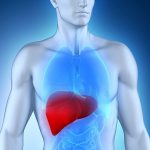
Everyone knows that specific type of sports parent – the over-the-top dad or mom who curses, shouts and even becomes physically aggressive during their kid’s match. While they might think they’re cheering their kid to victory, such poor sports behavior actually can turn a child or teen off to athletics, psychiatrists warn. “Some of those behaviors would be setting unrealistic expectations for the young athlete, such as perfection in a game and displaying disappointment or embarrassment if their kid isn’t meeting those expectations,” Dr. Lauren Havel, an assistant professor of psychiatry and behavioral sciences at Baylor College of Medicine in Houston, said in a news release. If children feel they can’t meet their parents’ expectations, they might start to doubt their own abilities, she warns. They also might worry whether their parent is proud of them, despite their struggles on the field or court. On the other hand, if a child does meet unrealistic expectations, they might equate their self-worth with perfection – a sure set-up for future self-esteem issues, Havel said. “When parents set unrealistic expectations or push too hard, kids can develop performance anxiety,” she said. Kids learn how to interact with others by watching the important adults in their lives, Havel said. As a result, children might wind up emulating the disrespect their parents show towards a coach, officials, the opposing team… read on > read on >


















